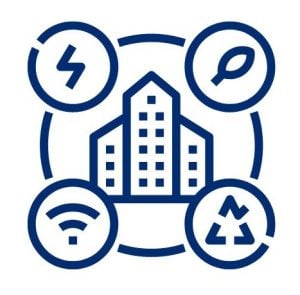As cities become more technologically advanced, researchers are working to understand how to protect urban areas from the various challenges that come with increased reliance on technology.
Supported by a Challenge Grant from the Institute for Assured Autonomy, a team led by Yinzhi Cao, associate professor of computer science at the Whiting School of Engineering, and Tamim Sookoor, senior professional staff at the Johns Hopkins University Applied Physics Laboratory, is investigating how to ensure that cities are resilient to threats posed by climate change, population growth, hackers, and other adversaries.
These Challenge Grants aim to support interdisciplinary research teams in developing ideas for high-impact projects that focus on the existential challenges of assured autonomy, positioning them to pursue opportunities for external funding.
The team also includes Dennis Bartko, Ivy Rivlin, Neil Fendley, and Vineet Kamat, at the Applied Physics Lab. Cao and Sookoor provide insight into their work by answering the following questions.
1. Briefly summarize the key focus and goals of the research you’re conducting through your IAA Challenge Grant. What prompted your team to take on this particular area of study?
We are working on the topic of enabling cities to be resilient to stressors such as climate change, population growth, and adversaries. Recent events such as the impact of extreme weather on power grids in Texas, California, and Hawaii as well as flooding of local utilities in Howard County here in Maryland, studies demonstrating the increase in urban populations, and attacks such as ransomware attacks on hospitals and governments, such as Baltimore City, motivated us to pursue this topic.
2. Describe some of the challenges associated with doing work on this topic, and how your team is addressing them.
Many entities from academia, industry, and governments have pursued the goal of developing smart cities over the last few decades. However, the actual progress has not lived up to the vision of technologically advanced urban areas that use multi-modal data to provide services, enhance the quality of life, and improve safety beyond what traditional cities offer. Due to these false starts, and the inability to achieve ambitious goals after millions of dollars of investment— as well as certain cities claiming to be smart based on incremental advancements—there is considerable skepticism around smart city research.
Our team plans to embrace these obstacles by acknowledging the challenges faced by prior approaches to developing smart cities and learning from those failures. We are also collaborating with a diverse group of researchers from across the nation who have the expertise necessary to address these challenges. Finally, we are gaining inspiration from computers and computer networks and drawing analogies to cities and collections of cities to develop a CityOS that, like an operating system on a computer, manages complexities such as resources and policies, enabling services to be developed that take the various stakeholders in a city into account.
3. How will your team’s work impact the field of assurance and autonomy? What are the next steps in this work?
Cities are fundamental environments in which many autonomous systems, such as autonomous transportation systems and smart buildings, are being deployed. Therefore, developing an approach to provide assurances and guarantees that support all systems deployed in cities will have a significant impact on the adoption of these capabilities. We are currently working on a proposal for a National Science Foundation Engineering Research Center focused on our topic that, if funded, could enable the vision of the CityOS to be realized.
